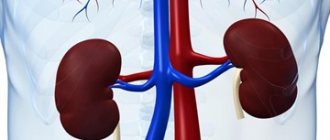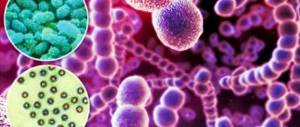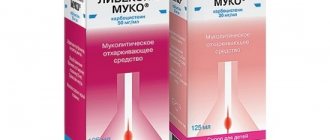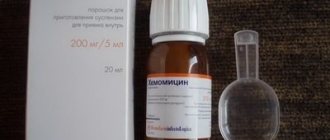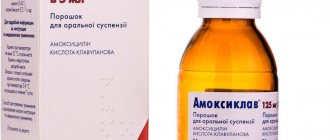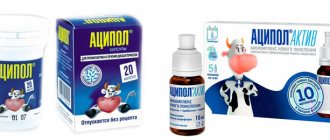What is it used for?
The product has certain indications. These include:
If you have other health problems, there may be restrictions on the prescription of the drug. In such cases, its use should be agreed with the supervising physician.
Side effects
During treatment, the following side effects may occur:
- digestive system: diarrhea, manifestation of acute pain in the upper abdomen on the right during the treatment of primary biliary cirrhosis;
- liver and biliary tract: in rare cases - calcification of stones, decompensation of liver cirrhosis in those undergoing treatment for primary biliary cirrhosis;
- skin, subcutaneous tissues: in rare cases - urticaria.
If the above side effects worsen or if any other negative symptoms appear during treatment, the patient must inform the specialist.
pharmachologic effect
When taken orally, ursodeoxycholic acid (UDCA) accumulates by passive diffusion on the walls of the small intestine. At the same time, the content of the substance in the blood increases.
During the therapeutic course, UDCA replaces the main bile acids entering the blood (48%). When taken daily at 10-20 mg/kg, UDCA replaces up to 75% of the acid composition of bile. Altered bile is involved in digestive and immune processes; in women it penetrates the placenta. The higher the content of UDCA in the bile fluid, the more pronounced the effect it gives.
The active substance Ursofalk has a membrane-stabilizing effect: direct cytoprotection is carried out on the membrane of cholangiocytes/hepatocytes. During the stages of its accumulation and entry into natural intestinal processes, hydrophobic acids—possible toxins—are gradually replaced.
Subsequently, there is a deterioration in the intake of cholesterol by the intestines, normalization of the microflora on the inner walls of the intestines and stomach. The natural process of rejection of toxins leading to cell death is launched.
This mechanism has positive side effects: inhibition of colon cancer cells, suppression of foci of inflammation on the intestinal walls.
Ursofalk capsules dosage and method of administration
Children and adults weighing less than 47 kg are recommended to use Ursofalk in suspension.
Dissolution of cholesterol gallstones
The recommended dose is 10 mg of ursodeoxycholic acid per 1 kg of body weight per day, which corresponds to:
- up to 60 kg - 2 capsules;
- 61 - 80 kg - 3 capsules;
- 81 -100 kg - 4 capsules;
- over 100 kg - 5 capsules.
The drug must be taken daily in the evening, before bed (the capsules are not chewed), with a small amount of liquid.
Duration of treatment is 6-12 months. To prevent recurrent cholelithiasis, it is recommended to take the drug for several months after the stones have dissolved.
Treatment of biliary reflux gastritis
1 capsule of Ursofalk daily in the evening before bed, without chewing and with a small amount of water.
The course of treatment is from 10-14 days to 6 months, if necessary - up to 2 years.
Symptomatic treatment of primary biliary cirrhosis
The daily dose depends on body weight and ranges from 3 to 7 capsules (approximately 14 ± 2 mg of ursodeoxycholic acid per 1 kg of body weight).
In the first 3 months of treatment, taking Ursofalk 250 mg capsules should be divided into several doses throughout the day. After improving liver parameters, the daily dose of the drug can be taken once, in the evening.
The following mode of application is recommended:
250 mg capsules
| Body weight (kg) | Daily dose | In the morning | During the day | In the evening |
| 47-62 | 3 | 1 | 1 | 1 |
| 63-78 | 4 | 1 | 1 | 2 |
| 79-93 | 5 | 1 | 2 | 2 |
| 94-109 | 6 | 2 | 2 | 2 |
| Over 110 | 7 | 2 | 2 | 3 |
Capsules should be taken regularly, without chewing, with a small amount of liquid.
The use of Ursofalk for the treatment of primary biliary cirrhosis can be continued indefinitely.
In patients with primary biliary cirrhosis, in rare cases, clinical symptoms may worsen at the beginning of treatment, for example, itching may become more frequent. In this case, treatment should be continued, taking one capsule daily, then the dosage should be gradually increased, increasing the daily dose by one capsule weekly, until the recommended dosage regimen is achieved again.
Symptomatic treatment of chronic hepatitis of various origins
Daily dose 10-15 mg/kg in 2-3 doses. Duration of treatment is 6-12 months or more.
Primary sclerosing cholangitis
Daily dose 12-15 mg/kg; if necessary, the dose can be increased to 20 mg/kg in 2-3 doses.
The duration of therapy ranges from 6 months to several years (see section: “Special instructions”).
Cystic fibrosis (cystic fibrosis)
Daily dose 12-15 mg/kg; if necessary, the dose can be increased to 20-30 mg/kg in 2-3 doses. The duration of therapy ranges from 6 months to several years.
Non-alcoholic steatohepatitis
The average daily dose is 10-15 mg/kg in 2-3 doses. The duration of therapy ranges from 6-12 months or more.
Alcoholic liver disease
The average daily dose is 10-15 mg/kg in 2-3 doses. The duration of therapy ranges from 6-12 months or more.
Biliary dyskinesia
The average daily dose is 10 mg/kg in 2 divided doses for 2 weeks to 2 months. If necessary, it is recommended to repeat the course of treatment.
Instructions for use
The main therapeutic substance (ursodeoxycholic acid) is allowed for use in all age categories. Due to the possibility of reducing a single dosage and the safe form of administration, a suspension is recommended for patients up to 36 months from birth (this applies to patients weighing up to 34 kg).
Method of use: oral. When removing cholesterol stones, portions of the medication are calculated based on weight. The optimal value is 10 mg/kg per day. For capsules this corresponds to: 35-60 kg - 2 pcs., 61-80 kg - 3 pcs., 81-100 kg - 4 pcs., from 100 kg - 5 pcs. Scheme for calculating the daily dose of a suspension drug based on the patient’s weight:
| Patient weight, kg | Drug weight, mg | Suspension volume, ml | Number of measuring spoons, pcs. |
| 5-7 | 62,5 | 1,25 | 0,25 |
| 8-12 | 125 | 2,5 | 0,5 |
| 13-18 | 187,5 | 3,75 | 0,75 |
| 19-25 | 250 | 5 | 1 |
| 26-34 | 375 | 7,5 | 1,5 |
| 35-50 | 500 | 10 | 2 |
| 51-65 | 625 | 12,5 | 2,5 |
| 66-80 | 750 | 15 | 3 |
| 81-100 | 1000 | 20 | 4 |
| From 100 | 1250 | 25 | 5 |
Take daily before bed with a small volume of water. If capsules are used, they are not chewed and are swallowed whole. The course for removing stones is 6-12 months. In order to prevent recurrence of formations, the medication must be used for another 2-3 months after recovery.
When diagnosing biliary reflux gastritis, Ursofalk is consumed daily in the amount of 250 mg. The average course is 0.3-6 months, in exceptional cases - 2 years. Elimination of the symptoms of primary biliary cirrhosis must be approached carefully. The daily dosage volume is calculated based on a person’s weight - for every 12-16 kg, 250 mg of the medicinal substance.
At the initial stage of treatment (about 3 months), the daily dose of the drug is divided into several parts. If there is improvement in liver condition, it is reduced to one at bedtime. The product is used until complete recovery.
In some patients, when taking the drug in the initial stages of therapy, side effects may occur: itching, pain. Then the daily dose is reduced to 1 capsule/spoon, taken in one evening dose. After a decline in the expressed symptoms of the disease, the dosage and number of daily doses gradually return to the necessary ones (5-7 days).
The list of other diseases, Ursofalk’s daily calculation and therapeutic periods are presented in the table:
Indications for use
The list of indications for the use of medications can be presented as follows:
- dissolution of cholesterol gallstones;
- biliary reflux;
- primary gastritis;
- biliary cirrhosis of the liver;
- chronic hepatitis of various origins;
- primary sclerosing cholangitis;
- non-alcoholic cystic fibrosis;
- stearthrohepatitis;
- alcoholic liver disease;
- biliary dyskinesia.
for adults
Patients of this age category can use a medicinal composition. The drug is highly safe and effective. The composition is prohibited from use in cases of severe renal impairment. The composition is not used in cases of severe liver dysfunction, accompanied by decompensation of cirrhosis. Elderly people require significant adjustment of the doses used.
for children
The medicinal composition can be used in pediatric practice, depending on the age and weight of the child. The drug is well tolerated, no adverse reactions are observed. The dose is set individually, the course of administration can be adjusted during treatment.
for pregnant women and during lactation
Not for use during pregnancy and breastfeeding.
Contraindications and side effects
Ursofalk should not be used if a patient has X-ray-positive stones in the gall bladder (with an excessive level of calcium in their composition), if the gallbladder fails/atrophies, or if there is inflammation in the areas of formation and flow of bile.
Additional factors for refusing the drug may be:
- infectious, viral or other suppuration in the intestinal area;
- decompensation stage of cirrhosis;
- dysfunction of the kidneys, pancreas or liver with severe symptoms;
- individual intolerance or atypical reaction of the patient’s body to the components of the drug;
- pregnancy in all trimesters;
- lactation period.
Possible side effects: pain in the right hypochondrium or epigastric zone, increased liver transaminases, allergic manifestations in the form of rashes and itching, nausea, bouts of diarrhea. Also, treatment of primary stage biliary cirrhosis may be accompanied by transient decompensation. After using the product, the symptom disappears.
Drug interactions
The absorption of UDCA, its digestibility and effect are reduced due to combined use with Colestipol, Kolestyramine or antacids. To avoid reducing the effectiveness of Ursofalk, these substances are taken at intervals of 2 hours or more.
Due to the likelihood of increased absorption of Cyclosporine from the gastrointestinal system, its presence in the body is clarified through a blood test, and adjustments are made to the intake. On an individual basis, the drug may suppress (partially or completely) the absorption of Ciprofloxalin.
The use of hypolipidic drugs (Clofibrate, etc.), Neomycin, estrogens or progestins increases the amount of cholesterol in bile and complicates the process of destruction of cholesterol seals under the influence of UDCA.
Analogs
Similar UDCA-based drugs are available on the market in a wide range. Drug substitutes in capsules/tablets:
- Urso;
- Livodex;
- Urso 100;
- Ursosan;
- Ursor S;
- Ursolite.
Substitutes are available as a suspension:
- Hofetol;
- Heptor;
- Pepopen;
- Oveson;
- Heptral.
Despite the similarity in chemical composition, these drugs may differ in the concentration of the active substance, components and mechanism of action. Before using them, you should study the included instructions in detail or consult a doctor.
Drug price
The cost of Ursofalk depends on the manufacturer, the volume of the drug in the package and the point of sale. Its approximate cost in Russian pharmacies:
Physiological jaundice in newborns is quite common and normal if it lasts several days. After 2-3 days, the yellowness of the skin goes away in most babies.
However, some babies remain with relatively mild or moderate jaundice for a long time. In this case, treatment is not prescribed; it goes away on its own if you follow the doctor’s recommendations.
If jaundice progresses to severe stages, then medication treatment is prescribed. Doctors recommend the medicine Ursofalk for newborns for jaundice.
Dosage regimen
Children and adults weighing less than 47 kg are recommended to use Ursofalk in the form of a suspension.
To dissolve cholesterol gallstones, a dose of 10 mg/kg body weight is prescribed 1 time/day.
| Body mass | Number of capsules |
| up to 60 kg | 2 |
| 61-80 kg | 3 |
| 81-100 kg | 4 |
| more than 100 kg | 5 |
The drug must be taken daily in the evening, before bed (the capsules are not chewed), with a small amount of liquid.
Duration of treatment is 6-12 months. To prevent recurrent cholelithiasis, it is recommended to take the drug for several months after the stones have dissolved.
For the treatment of biliary reflux gastritis, 1 caps is prescribed. Ursofalk is taken every evening before bed, with a small amount of water. The course of treatment is from 10-14 days to 6 months, if necessary - up to 2 years.
For the symptomatic treatment of primary biliary cirrhosis, the daily dose depends on body weight and ranges from 3 to 7 capsules (approximately 14±2 mg/kg body weight).
In the first 3 months of treatment, taking Ursofalk 250 mg capsules should be divided into several doses throughout the day. After liver function indicators improve, the drug can be taken 1 time per day, in the evening. The following dosage regimen is recommended:
| Body mass | Daily dose | in the morning | during the day | In the evening |
| 47-62 kg | 3 caps. | 1 caps. | 1 caps. | 1 caps. |
| 63-78 kg | 4 caps. | 1 caps. | 1 caps. | 2 caps. |
| 79-93 kg | 5 caps. | 1 caps. | 2 caps. | 2 caps. |
| 94-109 kg | 6 caps. | 2 caps. | 2 caps. | 2 caps. |
| more than 110 kg | 7 caps. | 2 caps. | 2 caps. | 3 caps. |
The use of Ursofalk for the treatment of primary biliary cirrhosis can be continued indefinitely.
In patients with primary biliary cirrhosis, in rare cases, clinical symptoms may worsen at the beginning of treatment, for example, itching may become more frequent. In this case, treatment should be continued, taking 1 capsule daily, then the dose should be gradually increased (increasing the daily dose by 1 capsule weekly) until the recommended dosage regimen is achieved again.
Symptomatic treatment of chronic hepatitis of various origins is a daily dose of 10-15 mg/kg in 2-3 doses. Duration of treatment is 6-12 months or more.
Primary sclerosing cholangitis - daily dose 12-15 mg/kg. If necessary, the dose can be increased to 20-30 mg/kg in 2-3 doses. The duration of therapy ranges from 6 months to several years.
Cystic fibrosis (cystic fibrosis) - daily dose 12-15 mg/kg; if necessary, the dose can be increased to 20-30 mg/kg in 2-3 doses. The duration of therapy ranges from 6 months to several years.
Non-alcoholic steatohepatitis - average daily dose of 10-15 mg/kg in 2-3 doses. The duration of therapy ranges from 6-12 months or more.
Alcoholic liver disease - average daily dose 10-15 mg/kg in 2-3 doses. Duration of therapy ranges from 6-12 months or more.
Biliary dyskinesia - average daily dose of 10 mg/kg in 2 divided doses for 2 weeks to 2 months. If necessary, it is recommended to repeat the course of treatment.
Capsules should be taken regularly, without chewing, with a small amount of liquid.
Ursofalk and jaundice in newborns
The medicine Ursofalk belongs to the class of hepatoprotectors. It is intended to treat liver pathologies and protect the organ from external irritants.
Under the influence of the drug, liver cells begin to work more actively and produce the required amount of enzymes that help remove bilirubin from the body.
Ursofalk also copes well with stagnation of bile in the liver and improves its outflow. Newborns while still in the maternity hospital must be under the supervision of a doctor.
Babies are tested for bilirubin, which shows whether there is jaundice or not. If the level of bilirubin in the blood exceeds, a course of complex treatment is prescribed, which includes: the use of the drug Ursofalk, phototherapy sessions.
It is important to know
: Bilirubin is excreted in feces and urine. The body is cleansed of toxic substances and jaundice in newborns goes away.
Indications for use of the drug
The drug has a wide sector of action:
- reduces cholesterol levels;
- has an immunomodulatory effect;
- improves the protective properties of cells;
- improves gastric secretion;
- breaks down cholesterol plaques and stones.
Ursofalk is used for the following diseases:
- jaundice in newborns;
- liver diseases in children;
- cirrhosis of the liver;
- biliary dyskinesia;
- hepatitis;
- toxic liver damage;
- reflux gastritis;
- primary sclerosing cholangitis;
- cystic fibrosis;
- urinary tract dyskinesia;
- atresia of intrahepatic bile flows.
The drug Ursofalk is prescribed for the prevention of colon cancer, liver damage, and while taking hormonal medications.
The drug is contraindicated in
: acute cholecystitis, cholangitis, blockage of the bile ducts, as well as allergic reactions to medicine.
Indications for use of Ursofalk
The drug is prescribed for the treatment of primary biliary cirrhosis in a compensated state, biliary reflux gastritis, for the dissolution of cholesterol stones in the gall bladder and in the case of cholestasis during parenteral nutrition, in the complex treatment of cystic fibrosis, biliary dyskinesia. It is also recommended for preventing the development of colon cancer in high-risk groups for this disease.
There are no age restrictions. Thus, the use of Ursofalk as a means of reducing the level of indirect bilirubin in the blood is possible in newborns with conjugative hyperbilirubinemia (jaundice).
Alt exceeded twice
How to give Ursofalk to newborns?
Instructions for use for newborns:
The use of Ursofalk has a quick and positive effect.
- It is recommended to take the drug in the evening, before the baby goes to bed at night.
- The duration of taking the medicine is individual. Basically, the reception lasts until the jaundice goes away.
- Although Ursofalk has practically no side effects, it should be used as a last resort when non-drug therapy methods do not help.
It is important to know
: Without consulting a specialist, you cannot prescribe the drug yourself!
Release form, composition and packaging
capsules , size No. 0, opaque, white; the contents of the capsules are white powder or granules.
| 1 caps. | |
| ursodeoxycholic acid | 250 mg |
Excipients: corn starch - 73 mg, colloidal silicon dioxide - 5 mg, magnesium stearate - 2 mg, titanium dioxide - 1.94 mg, gelatin - 80.51 mg, sodium lauryl sulfate - 0.2 mg, purified water - 14.55 mg.
10 pieces. - blisters (1) - cardboard packs. 25 pcs. - blisters (2) - cardboard packs. 25 pcs. - blisters (4) - cardboard packs.
The description of the drug is based on the official instructions for use and approved by the manufacturer.
Ursofalk for newborns from jaundice - reviews
Maria, 27 years old
The drug is really cool, but very strong! If jaundice is catastrophically severe, then you should take Ursofalk. But I am a pharmacist myself and I think that it is quite possible to get by with lighter drugs that cope with jaundice. Yes, vitamin D and the sun help!
Anna, 32 years old
When my baby was almost a month old, she remained yellow. The doctor prescribed the drug to be taken at home. This is better than being in the hospital for such a baby under IVs.
We drank it for 2 weeks, and pah-pah everything went away! And I want to say that the sun cannot always cope with the complex form of jaundice! Our bilirubin was more than 200 and jaundice did not appear immediately after birth, but only at 3 weeks.
Valentina, 29 years old
I gave it in suspension. I poured ¼ of the cap and fed my son from a pipette. It’s more convenient, he doesn’t spit it out! By one month we weighed about 4 kg. We completed a course of treatment with Ursofalk – 10 days. Thank God everything passed!
The yellowness has noticeably subsided, leaving a barely noticeable tan. Plus, the doctor told me to take vitamin D drop by drop and walk more in the fresh air. In combination, the effect is possible and good. But the drug, I think. Didn't do a small job.
Cheap analogues of the drug
There are many cheap analogues of the drug Ursofalk on the market, namely:
- Holacid;
- Urdox;
- Ursahol;
- Urzofalk;
- Ursilon;
- Ursosan;
- Solutrate
- Delursan.
Ursofalk or Ursosan
- which is better
?
According to reviews, both Ursofalk and Ursosan are effective drugs and absolutely identical in composition. True, the first one is more convenient to give, since it comes in suspension, but it is much more expensive in price.
Reviews about Ursofalk are mostly positive. However, in rare cases, side effects are observed, so you should be careful and monitor your child's reaction.
The baby may become capricious and curl up its legs. It is important to monitor your child for allergic reactions: skin itching, rashes in the form of hives. In this case, you should immediately consult a doctor or call an ambulance at home.
Ursofalk is a serious drug, but its effect has not been fully studied. This suggests that you can do without the medicine by replacing it with less complex analogues.
In most cases, newborns with jaundice are helped by fresh air and sunbathing. However, it is more difficult for children born in cold weather to soak up the sun's rays. In this case, there are special physiotherapy procedures where the newborn is placed under artificial lamps.
In any case, if parents decide to treat their baby with medication, this is done only for the benefit of their beloved child. The child feels the care and love of his father and mother, and gets better faster. Be healthy!
The medicine Ursofalk is available in the form of capsules and suspensions. This makes it possible to choose a method convenient for administration depending on the general condition of the patient and his age. Any form of Ursofalk medicine is accompanied by instructions for use.
Depending on the form of the drug Ursofalk, its composition also changes. The capsules, in addition to ursodeoxycholic acid, have the following auxiliary ingredients:
- corn starch;
- titanium and silicon dioxides;
- gelatin;
- magnesium stearate;
- sodium lauryl sulfate.
The composition of the Ursofalk suspension includes the following components:
- ursodeoxycholic acid;
- xylitol;
- purified water;
- glycerol;
- cyclamate and sodium chloride;
- propylene glycol;
- citric acid and flavoring.
Before taking Ursofalk, make sure that the suspension has a uniform consistency. The presence of air bubbles is also allowed, but this should not affect the fluidity of the drug.
Indications
Ursofalk is prescribed for various diseases that can be caused by both an unhealthy lifestyle and the consequences of various infections, uncontrolled use of complex medications, which leads to damage to liver cells.
The drug is prescribed to children when congenital or acquired pathologies are detected, either due to failure to monitor the health status of parents and the leading pediatrician, or due to destabilization of the immune system against the background of a generally unfavorable environment.
What Ursofalk helps with:
- Biliary dyskinesia;
- Cirrhosis (biliary only) of the primary form, provided there are no symptoms of decompensation;
- Chronic hepatitis (regardless of the cause);
- Cystic fibrosis or sclerosing cholangitis of the primary form;
- Steatohepatitis of non-alcoholic origin;
- Any liver dysfunction after prolonged alcohol abuse.
Ursofalk is also indicated for use in the presence of stones in the bile-producing and bile-excreting organs.
Purpose
Your doctor will tell you exactly how to take Ursofalk. The proportions recommended by the manufacturer may vary depending on the patient’s condition and ailments identified through tests and ultrasound examinations during the course of treatment.
As a standard, Ursofalk has the following application scheme:
- daily rate of 10 mg per kg of body weight, if the goal of therapy is the elimination of gallstones;
- the same dosage, but taken twice a day, to eliminate the effects of biliary dyskinesia;
- daily triple dose of 10-15 mg/1 kg of weight – to relieve symptoms of chronic hepatitis and fatty alcoholic liver disease;
- from 12 to 30 mg three times a day - in the treatment of primary sclerosing cholangitis.
The course duration can range from 2 weeks to several years. It all depends on the specific pathology identified in the liver cells, its origin and stage of development.
Pharmacodynamics
Ursodeoxycholic acid in the composition of the drug Ursofalk has a choleretic effect, helps reduce the concentration of cholesterol deposits in liver cells, and prevents their absorption by the intestines. Also, the medicine, if the dosage regimen is followed, quickly breaks down stones. Due to this, an increase in the volume of pancreatic and gastric secretions is achieved, and lipase activity increases.
An additional property of the drug is immunomodulation, in which:
- the expression of some antigens in the hapatocyte membrane decreases;
- the volume of IL-2 and T-lymphocytes is normalized;
- the number of eosinophils decreases.
Reviews of the drug Ursofalk indicate rapid recovery of the liver, a decrease in pain and a general improvement in the condition of the whole body due to the timely removal of harmful and toxic substances with a stably functioning organ. When prescribing a long course of treatment, it is better to find out in advance how much Ursofalk costs in your city in order to calculate the total costs of treatment and correlate this amount with your financial capabilities.
Contraindications
Like any medication, Ursofalk has a number of contraindications, which are as follows:
- hypersensitivity to one of the components of the drug;
- the presence of cholesterol stones with a high calcium content or large size;
- cirrhosis in the stage of decompensation;
- identified complex pathologies in the liver, kidneys or pancreas;
- inflammatory processes of an infectious nature in the gastrointestinal tract.
There are no age restrictions, provided that children under 3 years of age are prescribed Ursofalk exclusively in the form of a suspension.
By-effect
The following side effects may occur when taking Ursofalk:
- gastrointestinal disorders - loose stools or diarrhea (often);
- calcification of stones (extremely rare);
- pain syndrome in the area of the right hypochondrium.
All symptoms disappear when the drug is discontinued or when the dosage is changed.
Pregnancy and breastfeeding
Since the effect of ursodeoxycholic acid on the fetus has not been identified and it is not known whether it passes into breast milk, the use of the drug is not recommended when planning pregnancy, carrying a child and active breastfeeding.
Interaction with other drugs
Absorption of the active substance in the intestine may decrease if complex therapy includes drugs with cholestyramine, colestipol, and antacids containing aluminum.
Substitutes
The price of the drug Ursofalk ranges from 223.50 to 1265 rubles. If for some reason you need to find analogues, Ursofalk can be replaced with any medicine from the list below:
- Urdoxa;
- Livodex;
- Choludexan;
- Exhol;
- Ursoliv;
- Ursosan.
Indications
— dissolution of cholesterol gallstones;
- biliary reflux gastritis;
- primary biliary cirrhosis in the absence of signs of decompensation (symptomatic treatment);
— chronic hepatitis of various origins;
- primary sclerosing cholangitis, cystic fibrosis (cystic fibrosis);
- non-alcoholic steatohepatitis;
- alcoholic liver disease;
- biliary dyskinesia.
Polysorb for newborns against jaundice
An effective and powerful sorbent that allows you to cleanse the body of toxins, poisons and other harmful substances is Polysorb. Due to its many advantages and speed of action, Polysorb is prescribed to newborns for jaundice. Penetrating into the gastrointestinal tract, the medical sorbent binds toxic compounds and removes them naturally from the body.
“Polysorb” effectively removes toxic substances from the body, which contributes to recovery from jaundice.
Description
"Polysorb" is a medical enterosorbent. The main task is to bind and remove harmful substances, poisons and toxins from the blood and the body as a whole. The drug works in the gastrointestinal tract, but is not absorbed into the intestinal walls. In this case, toxic compounds are eliminated naturally along with the unchanged sorbent.
"Polysorb" painlessly removes harmful substances from the body without absorption in the intestines.
The sorbent is effective:
- with dysbacteriosis that has developed against the background of an intestinal infection;
- for diarrhea caused by poisoning;
- with physiological jaundice in newborns.
The active formula of the drug, consisting of silicon dioxide, is endowed with the unique ability to bind to organic molecules to form an insoluble colloid, which is then excreted from the body. The active ingredient works in the intestinal lumen, is not absorbed into its walls, and therefore does not accumulate in the body. Silicon dioxide colloid is excreted along with adsorbed toxins in the feces.
Composition, packaging
The active formula is based on silicon dioxide in the form of a colloid. The drug is available in one form - a whitish powder with a bluish tint for the preparation of an aqueous suspension. The medicine is packaged in disposable bags with an adult dosage of 3 g. Packaging is offered in plastic jars with a capacity of 12, 25, 50 g.
Indications
"Polysorb" is widely used to remove excess bilirubin from the blood of newborns, which provokes the development of physiological jaundice. The drug is prescribed when pathological conditions are detected in a child or adult, such as:
"Polysorb" is used for intoxication of the body, gastrointestinal infections, allergies.
- intoxications of various origins, occurring in acute and chronic forms;
- acute gastrointestinal infections - from poisoning to dysbacteriosis;
- non-infectious diarrheal syndrome;
- intoxication due to purulent-septic destruction of internal organs;
- acute poisoning with various substances;
- allergies to foods, medications;
- hyperbilirubinemia in viral hepatitis, hyperazotemia in chronic kidney dysfunction.
Effects
“Polysorb” is an inorganic sorbent with a non-selective sorption ability, that is, it is capable of absorbing and removing different classes of substances. The drug is capable of providing two main therapeutic effects - sorption and detoxification. Silicon dioxide at the heart of the current formula binds chemicals, toxins, biological waste products of pathogens, tissue breakdown and substances obtained during metabolic processes. "Polysorb" works equally effectively against exogenous and endogenous provocateurs of intoxication in the body. "Polysorb" removes bilirubin, urea, cholesterol, and lipid complexes. Often the sorbent is prescribed for flu or colds to relieve muscle pain and aching joints, weakness, apathy, dizziness, which are symptoms of intoxication. In some cases, the medicine acts as an antipyretic and speeds up the healing process.
Polysorb for jaundice in newborns
Every newborn develops jaundice, but it is expressed with varying degrees of intensity. In any case, this phenomenon is considered the norm for full-term babies and for 75% of premature babies. Physiological jaundice usually resolves in 7-10 days and does not require intervention.
But sometimes pathological jaundice appears, which lasts more than 2 weeks. In this case, the newborn’s general condition is disturbed. He is lethargic, whiny, screams until his voice is hoarse, does not eat, and his stool becomes discolored. Jaundice in this case is pronounced.
Sometimes jaundice syndrome appears during breastfeeding. This is due to the action of a specific enzyme in breast milk, which accelerates the reabsorption of bile pigment from the intestine. The pathology appears on the 7-10th day and disappears after 2 months.
Polysorb can help a child’s body with any form of jaundice. The drug has a safe composition and is therefore approved for use in newborns. The sorbent quickly binds excess bilirubin and toxic substances, removing them from the body. As a result, the baby’s jaundice gradually disappears, and accompanying symptoms such as weakness, nausea, and itching disappear. Silicon dioxide simultaneously absorbs excess coloring pigment from the blood, completely neutralizing the effect of harmful agents.

